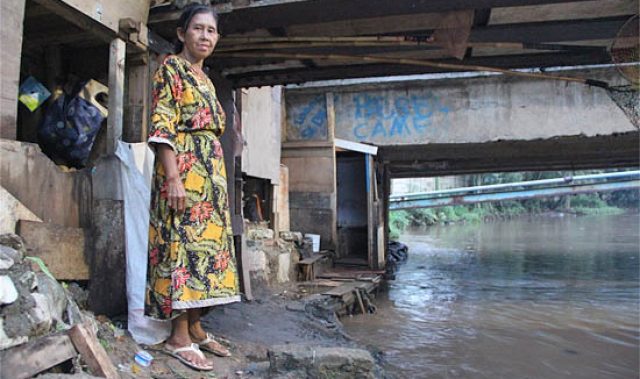
AsianScientist (Aug. 6, 2012) – Poor knowledge of basic healthcare and lack of sanitation are contributing to the high number of deaths among children under the age of five in Indonesia, according to UN statistics.
Among poorer households child deaths are more than three times higher than in richer ones.
According to Countdown 2015, a global collaboration to achieve health-related Millennium Development Goals, 151,000 Indonesian children died in 2010 before they reached the age of five – 35 out of every 1,000 live births.
To reach the target of reducing child deaths by two-thirds of the 1990 death rate, seven more children out of every 1,000 births need to survive.
Causes of children under five years dying in 2010 included pneumonia, which accounted for 14 percent of deaths, preterm births caused 21 percent, injuries 6 percent, and measles and diarrhoea 5 percent each, according to the World Health Organization (WHO). The agency noted that 48 percent of children’s deaths took place in their first 28 days of life.
“Poor nutrition and lack of clean water are important contributors to child mortality in Indonesia,” said Isni Ahmad, a spokeswoman for the NGO, Plan International, in Indonesia.
“Efforts to prevent death from diarrhea or to reduce the burden of diseases will fail unless people have access to safe drinking water and basic sanitation,” she told IRIN.
The 2010 Indonesia Health Profile revealed that 80 percent of the population were using clean water sources, but only 52 percent used hygienic, or “safe,” sanitation facilities.
The Indonesian Health Ministry says only around 12 percent of children aged between 5 and 14 wash their hands with soap after defecating, while 14 percent do so before eating. Improving the skills of health workers, especially those at community health clinics, is key to reducing child mortality.
A study by WHO noted in 2007 that diarrhea cases could be reduced by 32 percent if more people practiced basic sanitation, 45 percent washed their hands with soap, and 39 percent treated household water. The government adopted a child illness management policy that focuses on disease prevention in addition to treatment.
Volunteers trained by local health departments organized monthly check-ups for mothers and children at more than 260,000 community health posts, but a perceived lack of support and waning volunteer interest have led to a decline in these services.
Plan Indonesia is working in 10 of the country’s 33 provinces where infant and maternal mortality rates are high by providing clean water, helping children access quality health services, and educating parents about child rearing, including nutrition.
Improved health policy and legislation, a renewed focus on reducing malnutrition, improved coverage of key maternal and child health services, such as antenatal care and control of common childhood illnesses; are all contributing to reductions in overall mortality, said the UN Children’s Fund (UNICEF).
Nuraini Razak, a UNICEF information officer in Jakarta, the capital, said the government is working with UNICEF to expand exclusive breast feeding, community newborn care, vaccinations, complimentary feeding, and access to clean water and sanitation.
——
Source: IRIN; Photo: Natalie Bailey/IRIN.
Disclaimer: This article does not necessarily reflect the views of AsianScientist or its staff.












